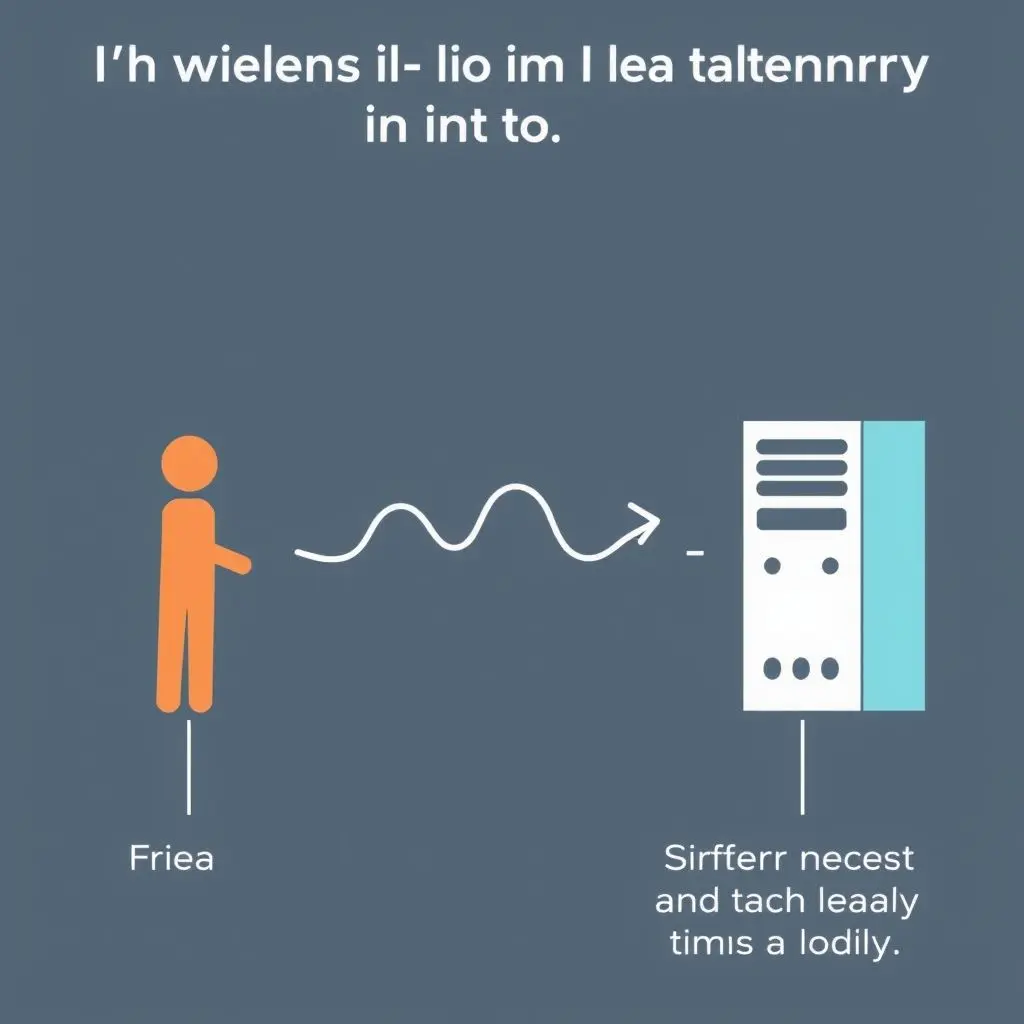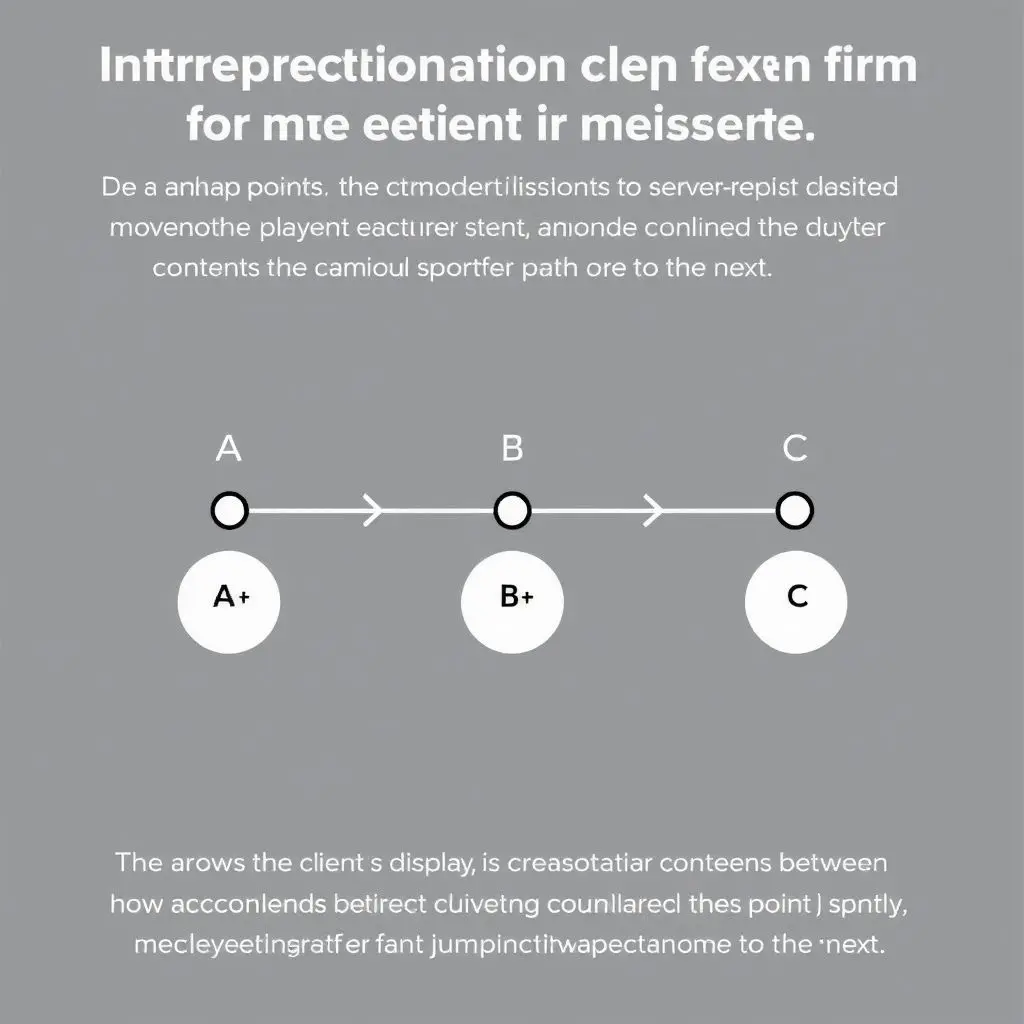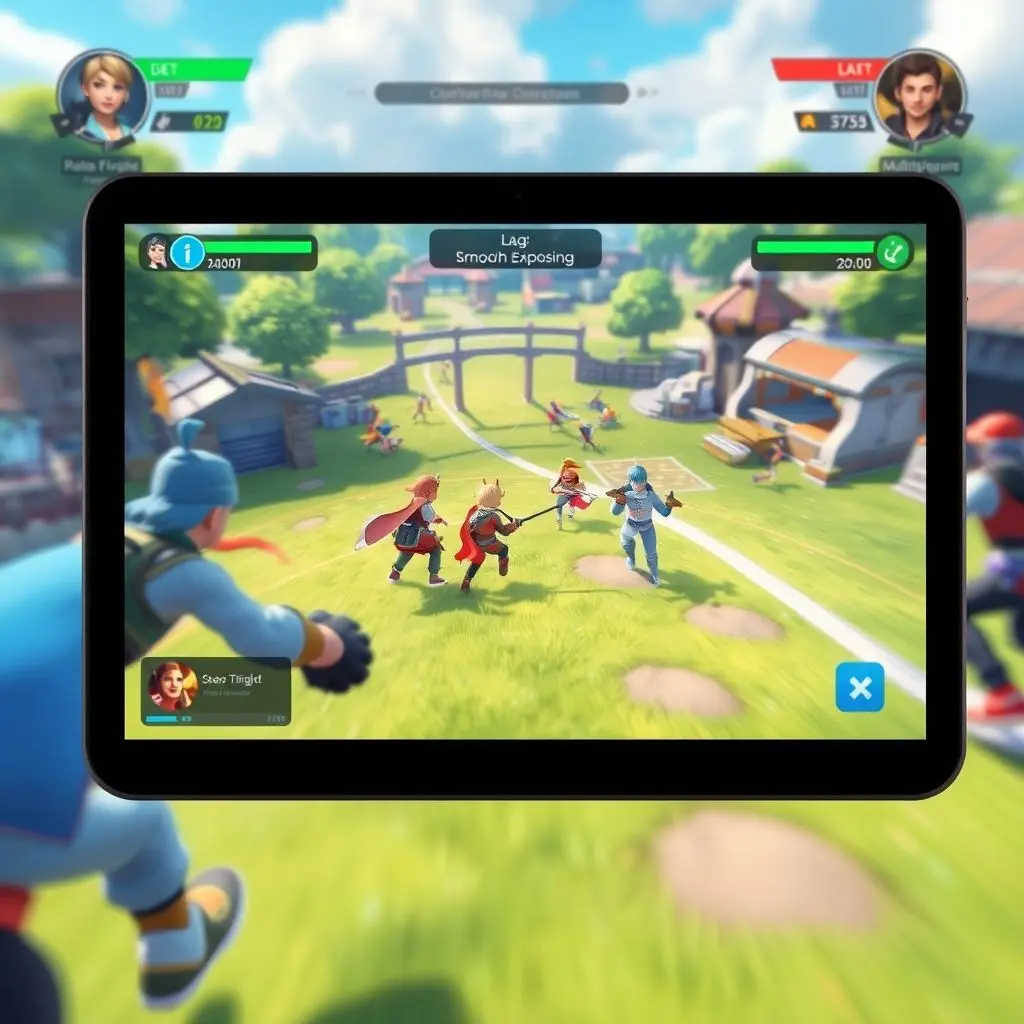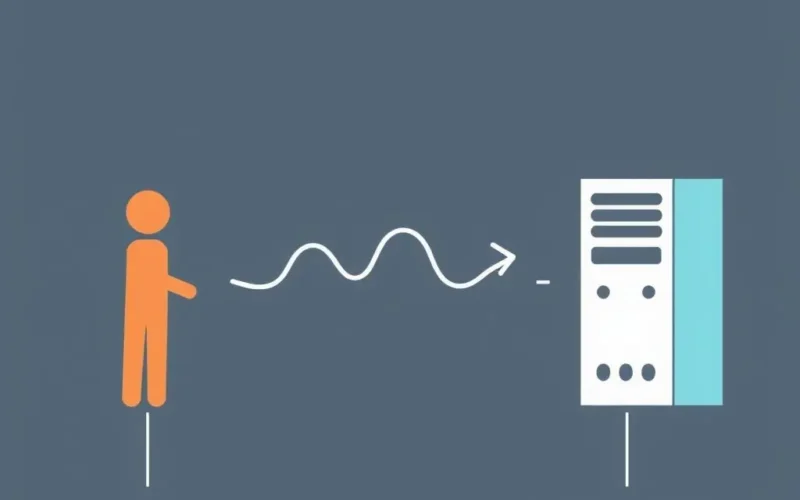Ever logged into an online game and marvelled at how responsive it feels, even when your internet connection might be less than stellar? You press a button, and things seem to happen almost instantly on your screen, despite the undeniable distance between you and the game server. That seemingly magical smoothness isn’t pure luck; it’s often the result of a sophisticated set of techniques known as Latency Hiding.
In the world of online gaming, latency is the unavoidable delay. It’s the tiny gap in time it takes for your action (like pressing ‘jump’) to travel from your computer or console to the game server, be processed, and for the server’s response to travel back to your screen. Even the fastest internet connections have some latency, and higher latency is what we commonly call ‘lag’. Lag can make games feel clunky, unresponsive, and downright frustrating. Since game developers can’t simply *eliminate* this physical limitation of data travel, they employ clever strategies to make it less noticeable, or ‘hide’ it.
Think of latency hiding as the game’s art of creating an illusion of perfect responsiveness. It’s about designing the player experience in such a way that minor delays don’t interrupt the flow, impact critical timing too severely, or shatter immersion. It’s a crucial element in making online games feel playable and enjoyable, especially for players who aren’t blessed with ultra-low ping.
Want a quick visual rundown of this concept? Or perhaps you stumbled here after catching our recent short exploration? Either way, dive into this brief explanation:
Table of Contents
The Problem: Why Latency is Such a Headache in Gaming
Before we delve into the solutions, let’s just quickly underscore *why* latency is the nemesis of smooth online gameplay. In single-player games, your actions have immediate consequences because everything is happening locally on your machine. In online games, however, the server is the central authority. It tracks the true state of the game world – where everyone is, what they are doing, who hit whom, etc.
If there’s a delay between you telling the server you want to move right, and the server confirming you moved right, your character on screen might momentarily freeze or teleport awkwardly when the server update finally arrives. In fast-paced games, even a tenth of a second of lag can mean the difference between dodging an attack and being hit, or landing a critical shot and missing. High latency leads to:
- Unresponsiveness: Inputs feel sluggish and delayed.
- Rubberbanding: Your character snaps back to a previous position as the server corrects your client’s ‘guessed’ position.
- Desync: What you see on your screen doesn’t match the true state on the server, leading to confusing situations like being shot after you took cover on your screen.
- Frustration: The inability to react reliably spoils the competitive balance and overall fun.
Latency hiding techniques aim to mitigate these painful symptoms.

How the Illusion is Crafted: Key Latency Hiding Techniques
Game developers employ a toolkit of strategies to minimize the perceived impact of latency. These aren’t mutually exclusive; often, several techniques are used in combination within a single game.
Client-Side Prediction (and Server Reconciliation)
This is perhaps one of the most fundamental and impactful techniques. Instead of waiting for the server to confirm every single action, the game client (running on your computer/console) immediately predicts the outcome of your local inputs.
Here’s the flow:
- You press the ‘move forward’ key.
- Your client *immediately* moves your character forward on your screen, assuming the server will allow it. It doesn’t wait for server permission.
- Simultaneously, your client sends the ‘move forward’ input command to the server.
- Later, the server processes your input, along with everyone else’s, updates the true game state, and sends this updated state back to your client.
- Your client receives the server’s authoritative update. It compares the server’s position for your character with the position it predicted locally. If they match (or are very close), no visible correction is needed. If they differ significantly (perhaps the server processed an enemy’s action that blocked your path), the client ‘reconciles’ the state, often by smoothly adjusting your character’s position to match the server’s, or sometimes resulting in a noticeable ‘rubberband’ if the difference is large.
Why it works: By showing the outcome of your actions instantly, it makes the game feel highly responsive from your perspective. The delay between input and *server processing* still exists, but the delay between input and *visual feedback on your screen* is minimized.
Caveats: If the client’s prediction is often wrong (due to high lag or complex interactions), frequent reconciliation can lead to jarring rubberbanding or visual glitches.
Visual Feedback and Instant Effects
Another crucial technique focuses on immediate visual and auditory responses to player input, even if the server hasn’t yet confirmed the action.
- When you click to shoot, the game might immediately play the firing animation, muzzle flash, and sound effect on your screen, even before the server registers the shot or confirms if it hit anything.
- When you swing a sword, the animation starts instantly.
- When you activate a spell, the particle effects might appear on your screen right away.
Why it works: Humans perceive responsiveness largely through sensory feedback. By providing instant visual and audio cues, the game tricks your brain into feeling like your action was immediately processed, even if the crucial game-state change (like dealing damage or hitting a target) is still pending server confirmation. This maintains the feeling of agency and immersion.

Interpolation and Extrapolation
These techniques are used to smooth the movement of *other* players (and dynamic objects) on your screen, even when you receive their position updates from the server intermittently and with delay.
- Interpolation: The client receives position updates for other players from the server. Instead of immediately snapping the other player’s character to the new position when an update arrives, the client buffers recent position data. It then draws the character smoothly moving *between* the last two known positions. This makes movement look fluid rather than jerky, even though you are always seeing other players slightly in the past.
- Extrapolation: If the delay between server updates is very high, or the game needs to display movement *now* and the last update is too old, the client might try to guess where a player *will be* based on their last known position and velocity. It draws the character at this extrapolated future position.
Why it works: Both methods prevent the ‘teleporting’ or ‘stuttering’ effect that would occur if characters just snapped to their latest received server position. Interpolation provides a smoother, albeit slightly delayed, view of others. Extrapolation attempts to provide a more current, but potentially inaccurate, view.
Caveats: Interpolation adds a small visual delay (you see others a bit in the past). Extrapolation can lead to characters appearing places they aren’t truly on the server if their movement changes unexpectedly, requiring snapping corrections.

Other Complementary Techniques
- Input Buffering: The game might temporarily store a few of your recent inputs if a server update is expected shortly, processing them in sequence when the server state arrives.
- Server Reconciliation: As mentioned with client-side prediction, this is the process where the server’s authoritative state corrects the client’s predicted state. It’s the counterpart to prediction.
- Lag Compensation (Server-Side): While sometimes grouped with latency hiding, this is slightly different. It’s a server-side technique, often used in shooters, where the server rewinds time slightly to check if a shot fired by a player *at their client’s perceived time* would have hit its target, even if the target had moved by the time the shot data reached the server. This makes hitting targets feel more reliable for players with higher ping, though it can sometimes feel unfair to low-ping players who are hit ‘behind cover’.
The Impact: Why Latency Hiding Matters for the Player Experience
Effective latency hiding is a cornerstone of modern online game development. It directly impacts:
- Immersion: Smooth, responsive gameplay keeps players engaged in the virtual world rather than focused on technical hiccups.
- Fairness (within limits): While it can’t eliminate the inherent disadvantage of high ping in competitive scenarios (like reacting to unforeseen events or peeker’s advantage), it makes the game significantly more playable and enjoyable for a wider range of players.
- Playability: Without these techniques, many online games would be unplayable for anyone not living next door to the server farm.
- Competitive Integrity: By smoothing out the experience, it allows player skill to be the primary factor in success, rather than who has the best internet connection (again, within reasonable bounds).
It’s a delicate balancing act. Developers must choose techniques that provide the best possible experience for the majority of players while minimizing negative side effects like cheating possibilities (some client-side actions could potentially be exploited) or jarring visual corrections.
Frequently Asked Questions
Q: Is latency hiding the same as lag compensation?
A: Not exactly, though they are related concepts aimed at mitigating latency issues. Latency hiding is primarily about techniques (often client-side) to make the game *feel* responsive and smooth despite delay (prediction, visual feedback). Lag compensation is typically a server-side technique that adjusts gameplay logic (like hit detection) to account for player latency, often by looking at past game states.
Q: Does latency hiding eliminate lag?
A: No, it cannot eliminate the physical delay of data transmission. It hides the *effects* of lag from the player as much as possible, creating the *illusion* of lower latency.
Q: Can latency hiding cause problems?
A: Yes. Aggressive client-side prediction can lead to noticeable rubberbanding if predictions are frequently wrong. Lag compensation can sometimes feel unfair to players with very low ping. It’s a trade-off developers constantly refine.
Q: Do all online games use latency hiding?
A: Most modern, fast-paced online games employ various forms of latency hiding to ensure a playable experience across different connections. Slower-paced or turn-based games might rely less on these techniques.
Q: How can I reduce my own latency?
A: While latency hiding helps, lowering your actual latency is always better. Using a wired Ethernet connection instead of Wi-Fi, ensuring you have sufficient internet speed, closing other applications using bandwidth, and playing on servers geographically closer to you are effective ways to reduce ping.

The Art of Smooth Online Play
In essence, latency hiding is a critical part of the complex engineering and design that goes into making a compelling online game. It’s a testament to developers’ ingenuity in overcoming fundamental technical challenges to deliver experiences that feel immediate, fluid, and immersive, even when the underlying reality involves packets of data zipping across continents. The next time you’re enjoying a super smooth online match, take a moment to appreciate the hidden magic working behind the scenes to make that delay disappear… almost!




